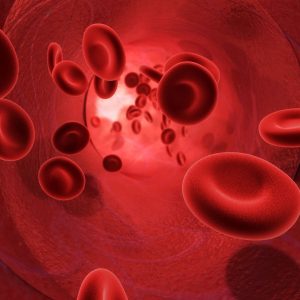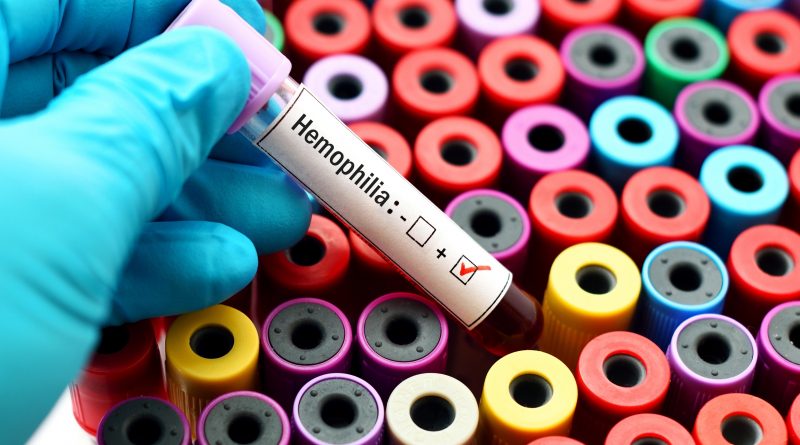Dangerous Disorder
With the alarming increase in the number of people suffering from haemophilia in the country, the need of the hour to take appropriate initiatives for establishing infrastructure and providing good quality factors for the management of the disease.
By Dr Manisha Yadav

According to a study conducted by the World Federation of Hemophilia (Annual Global Survey), almost 50 per cent of the world’s hemophilia population lives in India and almost 70 per cent of PWH (People with Hemophilia) do not have adequate knowledge or access to treatment. The risk of death from the lack of basic knowledge and untreated hemophilia is very high.
Hemophilia is a genetic and life-threatening bleeding disorder. Even with a minor injury or cut, in hemophilia patients’ blood does not clot normally due to the absence of clotting proteins called Anti-Hemophilic Factors (AHF).
If not taken care, recurrent and prolonged bleeding into joints and muscles can lead to permanent disability and bleeding from the sensitive organs can lead even to death. The only possible treatment is infusion of life saving drugs AHF, which are costly and neither produced nor readily available in India (1 unit of Factor costs around Rs. 10-12 and at any bleeding episode a person needs 500 to 2,000 IUs in one shot which amounts to an expenditure of Rs 5,000 to Rs 20,000 on an average.)
With the network of 80 Chapters spread across the country, Hemophilia Federation India (HFI) aims to reach out to more and more PWH and provide quality care, affordable treatment, educational & psycho-social support and economic rehabilitation. The HFI has so far been able to identify more than 16,000 hemophiliacs across the country out of estimated 1.2 lacs (1 in every 10,000 population).
According to Meenakshi Lekhi, Member of Lok Sabha, said, “Health is a sate subject but the support of the Central Government too is necessary to achieve healthcare objectives. I am happy that our Government has finally decided to waive off the customs duty on Anti Hemophilia Factors. This will make the product fairly easy to obtain.”
She emphasised the need to develop a unified management system for severe haematological disorders. She added, “We are trying to get haemophilia patients sanctioned for benchmark disability or under a special category of disability.” Considering the issue of haemophilia in women, she hinted about launching a project investigating bleeding disorders in women”
Discussing the current state of haemophilia in India, Dr Kanjaksha Ghosh, Expert, Haemophilia Federation of India, said, “At present, only 15% of the total hemophilia population has been identified in India and the rest remains undiagnosed. There are about 16000 patients registered with us, however, we suspect that the number of people suffering from hemophilia in India could be ranging seven times more than the current registered patients.”
The event aimed at generating sensitization on hemophilia for the policy makers both at national and state level. Recently held daylong session saw representation of senior officials from Ministry of Health and Family Welfare state secretaries of health, mission directors, eminent doctors, hematologists, physiotherapists and hemophilia caregivers from various medical colleges and hospitals of the country.
Talking about the disease management in Delhi region that focuses on providing treatment to patients in their vicinity, Dr Alok Srivastava, Professor, Department of Haematology, CMC Vellore said, “In Delhi, there are 2000 registered patients suffering from hemophilia and the state is also witnessing cases coming from other states as they do not have basic facilities and management care in their region. Through this initiative, we are proposing to build more “hemophilia care centres” in regions which would create effective mechanism for diagnosis, treatment and bringing timely comprehensive care for haemophiliacs within their reach. We are committed to provide the treatment accessible and provide state-of-the-art facilities for the patients.”
While talking about the state of hemophilia in the country and the need of the hour to take appropriate initiatives in collaboration with the government, Dr. Kanjaksha Ghosh added, “We thank the government for their support in establishing infrastructure and providing good quality factors for the management of disease in some parts of the country. However, we need to address this issue at a national level and thus, we would request government intervention at a macro level by means of funding, expanding infrastructural support, making free factors available and building trained workforce to control blood related disorders including Hemophilia”.
According to a study conducted by the World Federation of Hemophilia (Annual Global Survey), almost 50 per cent of the world’s hemophilia population lives in India and almost 70 per cent of PWH (People with Hemophilia) do not have adequate knowledge or access to treatment. The risk of death from lack of basic knowledge and untreated hemophilia is very high.

